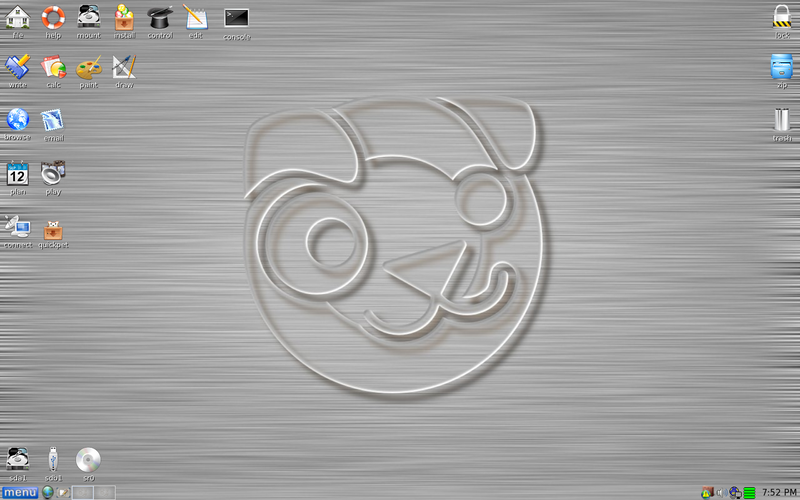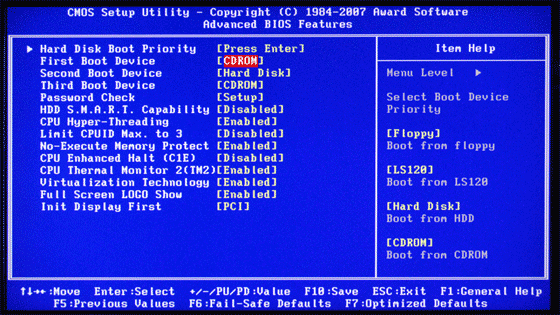thanks in advance to anyone for assistance

write protected hard drive
Started by
rayman79
, Nov 10 2013 04:06 AM
#1

 Posted 10 November 2013 - 04:06 AM
Posted 10 November 2013 - 04:06 AM

thanks in advance to anyone for assistance
#2

 Posted 10 November 2013 - 04:24 AM
Posted 10 November 2013 - 04:24 AM

Hello rayman79
How much free storage space was/is available on the drive.
What is the brand and model name or number of the drive please.
How much free storage space was/is available on the drive.
What is the brand and model name or number of the drive please.
#3

 Posted 11 November 2013 - 12:15 AM
Posted 11 November 2013 - 12:15 AM

thanks, its a WD not sure of model but WDBAAU0020HBK?? it says theres 1.44 TB free
#5

 Posted 13 November 2013 - 03:44 AM
Posted 13 November 2013 - 03:44 AM

thanks, how do i know all divers have been deleted? i'm a comp tech novice(at best)
#6

 Posted 13 November 2013 - 12:09 PM
Posted 13 November 2013 - 12:09 PM

I have a feeling that divers should actually read as drivers 
Another suggestion that I have read is to disable write caching on the USB HDD in device manager, before you do the following let us know if there is data on the drive that you would like to try and secure first - if it can be accessed that is.
Another suggestion that I have read is to disable write caching on the USB HDD in device manager, before you do the following let us know if there is data on the drive that you would like to try and secure first - if it can be accessed that is.
You can choose in the disk properties for optimize for quick removal or optimize for performance.
Select optimize for quick removal.
Backup the files and try reformatting it with NTFS with the disk manager of your operating system.
#7

 Posted 30 November 2013 - 05:51 AM
Posted 30 November 2013 - 05:51 AM

yeah i have data that i want to save, i will buy another usb HDD and then try reformatting
thanks
thanks
#8

 Posted 01 December 2013 - 02:27 AM
Posted 01 December 2013 - 02:27 AM

Has the "write protect" been disabled, if not did you try the following;
Go into the Device Manager, right click on the external USB HDD device, select "uninstall drivers", close Device Manager, disconnect the external HDD, restart the computer, connect the USB HDD and see if "write protect" is disabled, if this works use the Puppy guide below to back up your data.
Removing the HDD from the housing and trying a USB adapter such as the example here is worth a try but only if you can borrow one.
===================
***Required Hardware***
CD Burner (CDRW) Drive,
Blank CD,
Extra Storage Device (USB Flash Drive, External Hard Drive)
===================
1. Save these files to your Desktop/Burn Your Live CD:
2. Set your boot priority in the BIOS to CD-ROM first, Hard Drive Second
3. Recover Your Data
Remember to only click once! No double clicking! Once you drag and drop your first folder, you will notice a small menu will appear giving you the option to move or copy. Choose COPY each time you drag and drop.
YOU ARE DONE!!! Simply click Menu >> Mouse Over Shutdown >> Reboot/Turn Off Computer. Be sure to plug your USB Drive into another working windows machine to verify all data is there and transferred without corruption. Congratulations!

Go into the Device Manager, right click on the external USB HDD device, select "uninstall drivers", close Device Manager, disconnect the external HDD, restart the computer, connect the USB HDD and see if "write protect" is disabled, if this works use the Puppy guide below to back up your data.
Removing the HDD from the housing and trying a USB adapter such as the example here is worth a try but only if you can borrow one.
===================
***Required Hardware***
CD Burner (CDRW) Drive,
Blank CD,
Extra Storage Device (USB Flash Drive, External Hard Drive)
===================
1. Save these files to your Desktop/Burn Your Live CD:
- Download Latest Puppy Linux ISO (i.e.: lupu-528.iso)
Download BurnCDCC ISO Burning Software
There are instructions on how to boot from flash drive with puppy here; http://www.pendrivel...e-from-windows/
- Open BurnCDCC with Windows Explorer
- Extract All files to a location you can remember
- Double Click
 BurnCDCC
BurnCDCC - Click Browse
and navigate to the Puppy Linux ISO file you just downloaded
- Open/Double Click that file
IMPORTANT: Adjust the speed bar to CD: 4x DVD: 1x - Click Start

- Your CD Burner Tray will open automatically
- Insert a blank CD and close the tray
- Click OK
2. Set your boot priority in the BIOS to CD-ROM first, Hard Drive Second
- Start the computer/press the power button
- Immediately start tapping the appropriate key to enter the BIOS, aka "Setup"
(Usually shown during the "Dell" screen, or "Gateway" Screen) - Once in the BIOS, under Advanced BIOS Options change boot priority to:
CD-ROM 1st, Hard Drive 2nd - Open your ROM drive and insert the disk
- Press F10 to save and exit
- Agree with "Y" to continue
- Your computer will restart and boot from the Puppy Linux Live CD

3. Recover Your Data
- Once Puppy Linux has loaded, it is actually running in your computer's Memory (RAM). You will see a fully functioning Graphical User Interface similar to what you normally call "your computer". Internet access may or may not be available depending on your machine, so it is recommended you print these instructions before beginning. Also, double clicking is not needed in Puppy. To expand, or open folders/icons, just click once. Puppy is very light on resources, so you will quickly notice it is much speedier than you are used to. This is normal. Ready? Let's get started.
3a. Mount Drives - Click the Mount Icon located at the top left of your desktop.

- A Window will open. By default, the "drive" tab will be forward/highlighted. Click on Mount for your hard drive.
- Assuming you only have one hard drive and/or partition, there may be only one selection to mount.
- USB Flash Drives usually automatically mount upon boot, but click the "usbdrv" tab and make sure it is mounted.
- If using an external hard drive for the data recovery, do this under the "drive" tab. Mount it now.
- At the bottom left of your desktop a list of all hard drives/partitions, USB Drives, and Optical Drives are listed with a familiar looking hard drive icon.
- Open your old hard drive i.e. sda1
- Next, open your USB Flash Drive or External Drive. i.e. sdc or sdb1
- If you open the wrong drive, simply X out at the top right corner of the window that opens. (Just like in Windows)
- From your old hard drive, drag and drop whatever files/folders you wish to transfer to your USB Drive's Window.
Remember to only click once! No double clicking! Once you drag and drop your first folder, you will notice a small menu will appear giving you the option to move or copy. Choose COPY each time you drag and drop.
YOU ARE DONE!!! Simply click Menu >> Mouse Over Shutdown >> Reboot/Turn Off Computer. Be sure to plug your USB Drive into another working windows machine to verify all data is there and transferred without corruption. Congratulations!

Similar Topics
0 user(s) are reading this topic
0 members, 0 guests, 0 anonymous users
As Featured On:














 Sign In
Sign In Create Account
Create Account

